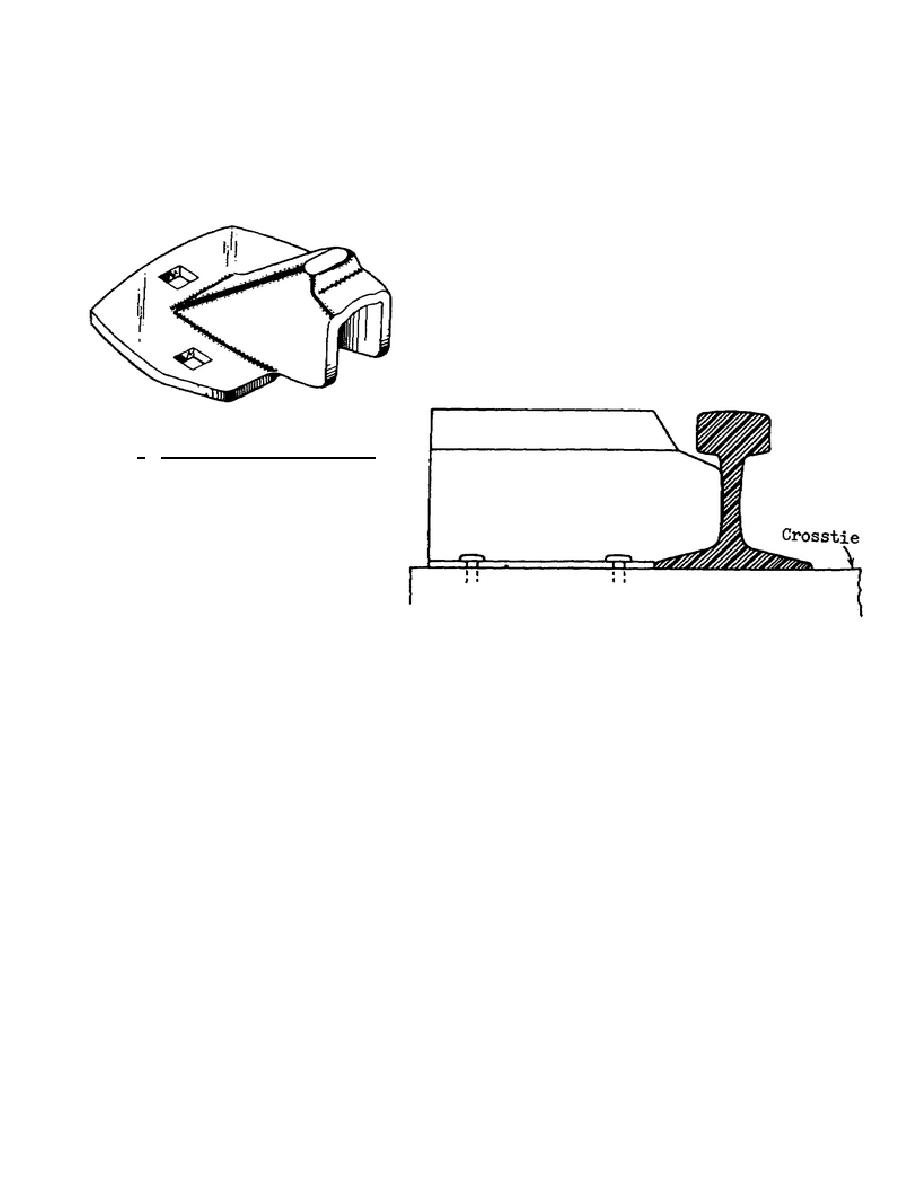
of trains operating over the track but must be long enough to prevent sudden jolts. Shims are available in varying
thicknesses and materials; those made of oak are best. Part C of figure 4.10 lists the dimensions of standard
shims. For thicknesses up to 1 inch, ordinary 5 1/2-inch spikes may be used to fasten the rail. For greater
thicknesses, 6- or 6 1/2-inch spikes must be used. The maximum thickness recommended is 2 to 3 inches.
Part B of figure 4.10 illustrates seven ways to shim heaved track; overhead and vertical views of each
method are given. Note the rail braces used with the shims in views B(1), B(5), and B(6). Either metal or
wooden bar braces may be used. A metal one is shown in the
sketch at the left; a wooden one is shown in view B(8) of figure
4.10. A tie plate may also be used as a brace, as view B(3) of
figure 4.10 shows. When manufactured rail braces are not on
hand, braces may be cut with a torch from rail sections. Then
they are spiked to the tie so that they bear against the web of the
rail. Such a brace is shown in the sketch at the right.
c. As soon as a spring thaw occurs,
shims must be removed, tie plates must be
replaced, or ballast must be replaced,
depending upon the method used to
compensate for heaved track. After that, the
tracks must be resurfaced. The difficulty
and expense of these operations are major
reasons for taking every possible step to
correct the poor drainage leading to heaved
track.
4.22.
CREW SAFETY AND COMFORT
For their safety and comfort, be sure that maintenance crews wear warm clothing during cold weather
and, in severe climates, provide shelters for them at suitable locations on the line. When using snowplows, make
certain that personnel are clear of wings and
108



 Previous Page
Previous Page
